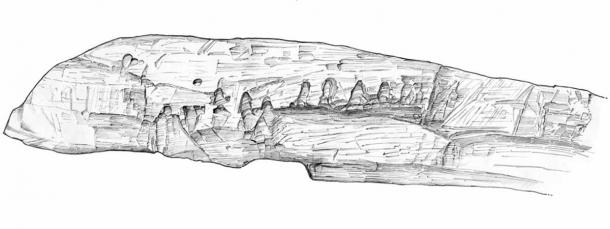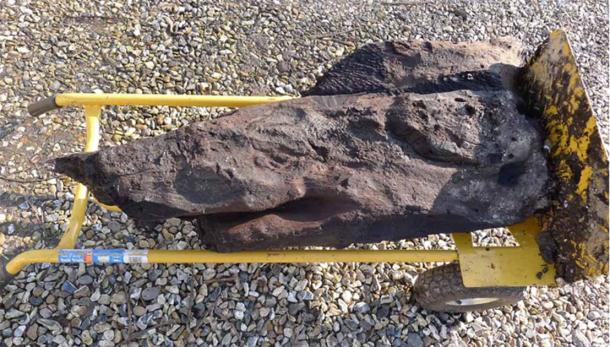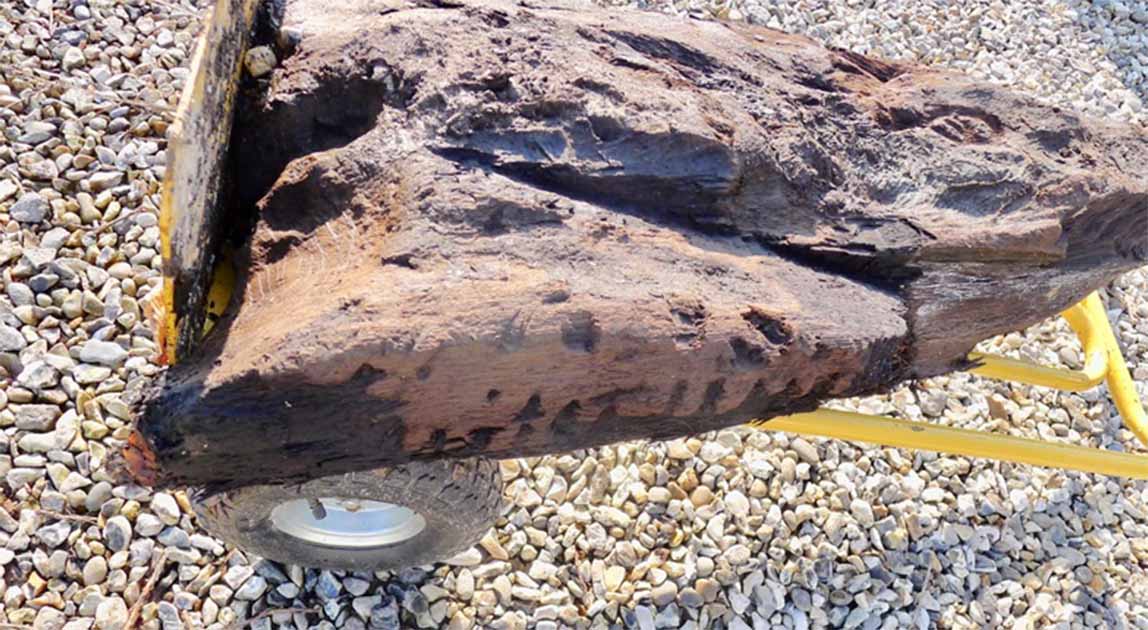Britain's Oldest Wooden Artifact Found With Curious Carvings
This special piece of timber was unearthed on a building site in the village of Boxford in Berkshire, England. Decorated with mysterious carvings, this rare wooden artifact has been compared to Shigir Idol, the oldest piece of carved wood in the world.
Until now, the oldest piece of wood discovered in England, known as the "Sweet Track," was an ancient walkway in the Somerset Levels that dated back to the Neolithic period, around 3807 BC, making it over 5,000 years old. Now, a large chunk of oak has been discovered in England, that was well-preserved in peat, and it has been dated to the European Mesolithic period, “more than 6,000-years-ago”.
- Neolithic “Woodhenge” Discovered at Perdigões’ Complex Portugal
- Why One Neolithic Scottish Settlement Didn’t Need Any Fertilizer
Digging Up the Oldest Wooden Artifact
This story begins four years ago when landowner, Derek Fawcett, was constructing a new outbuilding. When the builders were digging out a foundation trench for the outhouse, Fawcett spotted timber and contacted the county archaeologist, Sarah Orr. After inspection, Orr determined that the wooden item was located about 1.5 meters (4.92 ft) below the ground level, and that “it was clearly very old and appeared well preserved in peat.”
Fawcett and Orr hosed down the timber and noticed what appeared to be markings that Orr said looked “unnatural and possibly man-made." Fawcett and Orr have since been working closely with a multidisciplinary team of archaeologists from Historic England, who teamed up with scientists from the Nottingham tree-ring dating laboratory, and the Centre for Isotope Research at the university of Groningen.

Judith Dobie, Archaeological Illustrator at Historic England, tracing the markings on the Boxford Timber. (© Historic England)
Measuring Up Mesolithic Rarities
The scientists measured the piece of wood at: one meter (40 inches) long, 42 centimeters (16.5 inches) wide and 20 centimeters (8 inches) thick. The timber was radiocarbon dated, and the researchers also analyzed the tree rings. The amalgamated dating was between 4,640 BC and 4,605 BC, to an accuracy of 95%, about which Fawcett said was "rather surprising".
Janine Fox, the curator of the West Berkshire Museum, described the carved timber as "a brilliant find.” She added that the piece of wood “offered a rare perspective on the long rich heritage of West Berkshire,” and that it provides “a tangible link to humans who lived in this area long before any towns and villages had been created."

Archaeological illustration showing intentional cut marks. (© Historic England / Judith Dobie)
The Deeply-Ancient Shigir Idol
The Historic England archaeologists have compared the style of the symbols on the piece of wood, to decorative styles found on early Neolithic pottery. However, the researchers also point towards the markings that represent body decoration on the wildly ancient Shigir Idol.
Known as the oldest known piece of carved wood in the world, the Shigir Idol is an ancient wooden statue discovered in the Ural Mountains of Russia. Dating back around 11,000 years, to the Mesolithic era, the figure stands at 2.8 meters (9.19 feet) tall, and it was carved from a single piece of larch wood. Featuring a human-like figure with a narrow face, and eyes, the ornate decorations on this piece are reflected in the Berkshire timber.
- World Famous Shigir Idol is Twice as Old as Stonehenge!
- Rare and Enigmatic Zbruch Idol: 4-Headed Slavic God Pulled from a River
The meaning of the symbolism on the Shigir Idol, and on the timber discovered in England, both remain historical mysteries. But their ages, complexity, and inherent artistic skill, offer valuable insights into the development of artistic and spiritual practices within early, pre-Neolithic, human societies.

The carved wood dates to the Late Mesolithic period (4640 BC to 4605 BC) making it the oldest wooden artifact found in England. (© Derek Fawcett/Historic England)
The Timber Will Be Donated On Museums Week
Once the scientists have completed their study on the timber, Fawcett will donate the rare artifact to the West Berkshire Museum, and his donation will be formally announced on Museum Week, from June 5-11. Since 2014, Museum Week has grown to include over 60,000 participants from 100+ countries and it has become the world’s official international week of museums, backed by UNESCO.
Museum Week is organized by Culture For Causes Network, an official French non-profit organization, that pulls together an international community of galleries, libraries, archives, museums, science and music centers committed to social change. The event relies on social media marketing to attract people to local events, and once on display, the carved Berkshire timber is sure to attract prehistory thirsty crowds.
Top image: The Boxford Timber discovered in Berkshire. At more than 6,000 years old, it is Britain's oldest carved wood. Source: © Derek Fawcett/Historic England
By Ashley Cowie



















